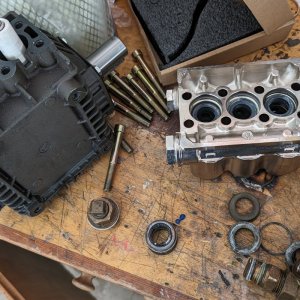Not necessarily...
A muffler will have to be larger to accomplish the same task, but can be large enough to be quieter, actually.
I think that the advantage of silencers comes from the fact that they can be very compact, relative to mufflers.
Mufflers cost less... unless they're stainless steel, of course.
In my experience, the higher the RPM of the blower, the better the silencers sound, vs. standard mufflers. Silencer manufacturers are keenly aware of how well their silencers do in regard to blower RPM in particular, which is why you'll hear them mention "transition speed" as a critical factor, when spec'ing one in. (Each model of blower has it's own transition speed, but generally, it's above 3,200 RPM...)

